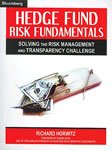Question
1-A tenant's Load Factor equals 0 when there are no common areas in any parts of the building. 2-A tenant's Load Factor is always greater
1-A tenant's Load Factor equals 0 when there are no common areas in any parts of the building.
2-A tenant's Load Factor is always greater than 1 when there is a lobby that's considered a common area.
3-The higher the Load Factor for common areas in all parts of the building, the higher the rent per s.f. of the tenant's usable space.
4-The higher the Load Factor for common areas in all parts of the building, the higher the rent per square foot of the tenant's rentable space.
5-A tenant should always prefer a lower Load Factor.
6-CAM charges shift the costs of maintaining common areas from the property owner to tenants, and are part of tenants' base rents.
7-Anchors and in-line tenants contribute to the mall's CAM expenses by paying their prorated share of the expenses that is based on their relative square footage of usable space.
8- 75% CPI adjustment means that the percentage increase in rents (rather than the new level of rents) will equal 75% of the percentage increase in the CPI.
9- Gross leases are always the riskiest for the tenants.
10- All else being equal, a move-in allowance and a rent concession offered by the building owner to the new tenant have the opposite effects on the effective net rent.
choose all true statements?
Step by Step Solution
There are 3 Steps involved in it
Step: 1

Get Instant Access to Expert-Tailored Solutions
See step-by-step solutions with expert insights and AI powered tools for academic success
Step: 2

Step: 3

Ace Your Homework with AI
Get the answers you need in no time with our AI-driven, step-by-step assistance
Get Started


